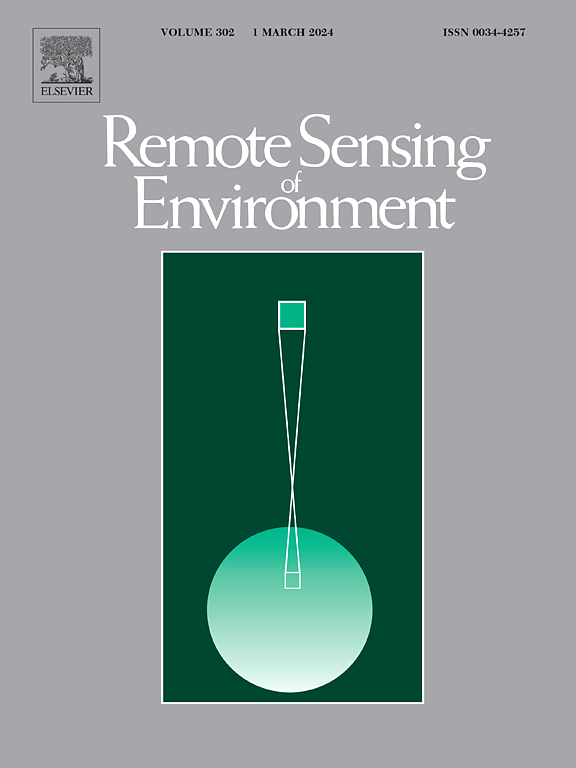Mapping recreational marine traffic from Sentinel-2 imagery using YOLO object detection models
IF 11.1
1区 地球科学
Q1 ENVIRONMENTAL SCIENCES
引用次数: 0
Abstract
Identifying where maritime activities take place, and quantifying their potential impact on marine biodiversity, is important for the sustainable management of marine areas, spatial planning and marine conservation. Detection and monitoring of small vessels, such as pleasure crafts, has been challenging due to limited data availability with adequate temporal and spatial resolution. Here, we develop an analysis framework to detect and quantify small vessels, using openly available Sentinel-2 optical imagery, and the YOLO-family object detection models. We also show how existing spatial datasets can be used to improve the quality of the model output.
We chose five distinct marine areas along the Finnish coast in the northern Baltic Sea and manually annotated 8,768 vessels for training and validating object detection models. The top-performing model, based on F1-score, achieved a test set F1-score of 0.863 and an mAP50 of 0.888. This model was then used to quantify pleasure crafts in the southern part of Finland from May to September 2022, using all available Sentinel-2 images with sufficient image quality. Detected recreational traffic was primarily concentrated on boating lanes and close to marinas, with weekend traffic averaging approximately twice the volume of weekday traffic.
The developed approach can be used to identify areas with high boat traffic, thus supporting sustainable spatial planning, ecological impact avoidance, and serving as an indicator of recreational popularity of marine areas. Additionally, it provides a basis for assessing the potential impacts of pleasure crafts on marine biodiversity. By leveraging openly available satellite images with frequent revisits, the approach offers broad geographical coverage and high spatial accuracy, making it scalable for estimating boat traffic across large areas, even globally.
利用YOLO目标检测模型从Sentinel-2图像绘制休闲海上交通地图
确定海洋活动发生的地点并量化其对海洋生物多样性的潜在影响,对于海洋区域的可持续管理、空间规划和海洋保护至关重要。由于数据可用性有限,且具有足够的时间和空间分辨率,因此对小型船只(如游艇)的检测和监测一直具有挑战性。在这里,我们开发了一个分析框架来检测和量化小型船只,使用公开可用的Sentinel-2光学图像和yolo系列目标检测模型。我们还展示了如何使用现有的空间数据集来提高模型输出的质量。我们在波罗的海北部的芬兰海岸选择了五个不同的海洋区域,并手动注释了8,768艘船,用于训练和验证目标检测模型。基于f1得分的最佳模型,测试集f1得分为0.863,mAP50为0.888。然后,使用所有可用的具有足够图像质量的Sentinel-2图像,使用该模型对2022年5月至9月芬兰南部的游乐船进行量化。检测到的休闲交通主要集中在游艇道和码头附近,周末交通流量平均约为工作日交通流量的两倍。开发的方法可用于识别船只流量大的区域,从而支持可持续的空间规划,避免生态影响,并作为海洋区域娱乐受欢迎程度的指标。此外,它为评估游乐船只对海洋生物多样性的潜在影响提供了依据。通过利用可公开获得的卫星图像并进行频繁的重访,该方法提供了广泛的地理覆盖范围和高空间精度,使其可扩展到估计大区域甚至全球的船只流量。
本文章由计算机程序翻译,如有差异,请以英文原文为准。
求助全文
约1分钟内获得全文
求助全文
来源期刊

Remote Sensing of Environment
环境科学-成像科学与照相技术
CiteScore
25.10
自引率
8.90%
发文量
455
审稿时长
53 days
期刊介绍:
Remote Sensing of Environment (RSE) serves the Earth observation community by disseminating results on the theory, science, applications, and technology that contribute to advancing the field of remote sensing. With a thoroughly interdisciplinary approach, RSE encompasses terrestrial, oceanic, and atmospheric sensing.
The journal emphasizes biophysical and quantitative approaches to remote sensing at local to global scales, covering a diverse range of applications and techniques.
RSE serves as a vital platform for the exchange of knowledge and advancements in the dynamic field of remote sensing.
 求助内容:
求助内容: 应助结果提醒方式:
应助结果提醒方式:


